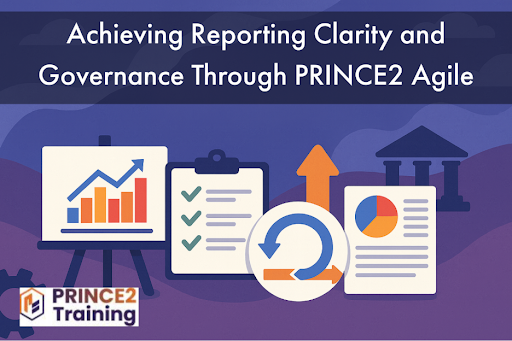Ask any project team where things start to unravel, and you’ll hear the same words: reporting confusion, unclear roles, and last-minute escalations. It’s not that people don’t care; it’s that there’s no common language. Reports get buried in jargon or guesswork. Decisions take too long. And governance ends up feeling more like red tape than a support system.
That’s exactly where PRINCE2 Agile Certification comes into its own. It doesn’t just keep projects moving. It helps leaders see clearly, ensures reports are useful, and keeps governance connected, not disconnected from delivery. Let’s explore how PRINCE2 Agile achieves this balance and why more teams are turning to it for clarity and control.
Table of Contents
- Where Traditional Reporting Falls Short
- What PRINCE2 Agile Changes About Project Reporting
- The Role of Governance in Agile Projects
- How PRINCE2 Agile Brings It All Together
- Conclusion
Where Traditional Reporting Falls Short
In many projects, reporting is done to tick a box. Weekly updates get written for the sake of it. Dashboards are colourful but not insightful. Project boards often get information too late or too vaguely to act on it. And because traditional reports are usually fixed from day one, they don’t adapt well to change.
So, when things shift (and they always do), reporting either ignores the change or gets muddled trying to explain it. That’s where the disconnect starts. Leaders stop trusting updates. Teams stop taking reporting seriously. And governance becomes a bottleneck instead of a safety net.
What PRINCE2 Agile Changes About Project Reporting
PRINCE2 Agile keeps the structure that leaders rely on but blends it with the adaptive nature of Agile delivery. Reporting becomes more than status updates; it becomes a real-time tool for decision-making. It enables conversations grounded in current progress, rather than outdated metrics. Teams and leadership can respond based on evidence, not assumptions.
It shifts reporting from being a chore to something that moves the project forward. Each update becomes a tool to spark useful conversations, rather than just a way to show progress. The framework allows for regular feedback, short delivery cycles, and clear checkpoints.
Instead of lengthy documents, reports are aligned with product delivery, tied to tangible outputs, and reviewed regularly. That means problems are identified earlier, adjustments are easier, and everyone is aware of what’s going on. It’s a shift from static reports to meaningful conversations.
The Role of Governance in Agile Projects
There’s a myth that Agile projects lack governance. That everything’s up in the air and no one’s in control. PRINCE2 Agile clears that up. Governance is very much present; it’s just not tied up in unnecessary formality. The framework defines who has authority, what tolerance levels are acceptable, and when decisions must be escalated, all without choking the delivery process.
Some people would say that PRINCE2 Agile makes governance stronger by making it easier to see, more timely, and a lot more a part of the daily delivery process. In fast-moving situations, this kind of structured flexibility is quite important. It keeps people responsible, stops things from becoming stuck, and gives sponsors the peace of mind that the project is still on track.
How PRINCE2 Agile Brings It All Together
Here’s how PRINCE2 Agile helps teams strike the sweet spot: strong governance without excessive bureaucracy, and clear reporting without unnecessary paperwork.
Reporting That Informs
With Agile delivery cycles built in, reporting occurs more frequently, yet with less effort. It focuses on progress made, value delivered, and what’s coming next. Teams don’t waste hours producing reports no one reads. They share meaningful updates that help guide the project forward. It also helps eliminate duplication. Instead of creating separate reports for different audiences, teams deliver one aligned update that works for stakeholders, sponsors and internal delivery reviews.
Governance Without Micromanagement
PRINCE2 Agile sets up clear escalation routes. If something’s off track, it’s not buried or delayed; it surfaces quickly. Governance bodies stay involved without hovering. That trust in the process helps delivery teams stay focused, knowing they’ll be supported, not second-guessed. It also encourages teams to be proactive, knowing they won’t be penalised for raising issues early or suggesting changes.
Clear Roles, Clear Flow
Roles like the Executive, Senior User, and Project Manager are clearly defined. So are Agile roles like Scrum Master or Product Owner, when relevant. Everyone knows where they fit. That alignment makes both reporting and governance simpler and more effective.
Conclusion
PRINCE2 Agile lets you get through all the project reports while still keeping an eye on governance and agility. It helps teams be consistent without losing their ability to be flexible. It gives everyone a shared rhythm that keeps them all focused on the same goal. Consider PRINCE2 Training to explore how PRINCE2 Agile can help you build transparency, accountability and smarter delivery into every project.
Read Also: techinfobusiness.com



